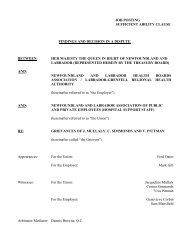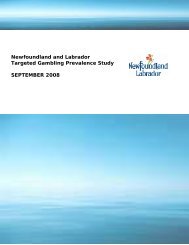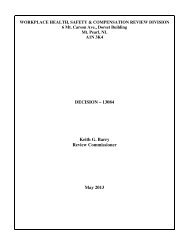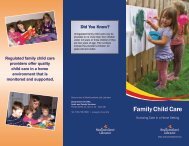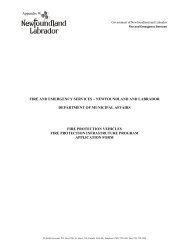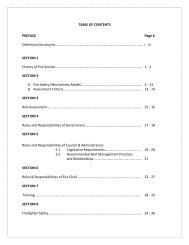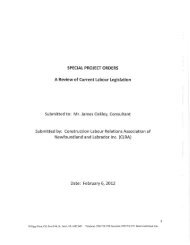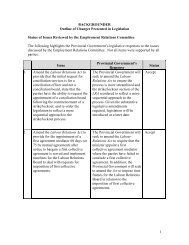Basic Level Pre-Course Reading
Basic Level Pre-Course Reading
Basic Level Pre-Course Reading
You also want an ePaper? Increase the reach of your titles
YUMPU automatically turns print PDFs into web optimized ePapers that Google loves.
Chapter 4<br />
Personal Protection<br />
droplets, microscopic dust particles, or from contact with body fluids. Nerve agents<br />
induce the acute production of body fluids. Responders must be prepared to protect<br />
themselves from the transmission of all communicable diseases when this occurs.<br />
Universal precautions should be used when treating decontaminated victims.<br />
4.3 Universal (or Routine) <strong>Pre</strong>cautions<br />
Universal precautions are infection control guidelines designed to protect workers from<br />
exposure to disease spread by blood and body fluids. The Laboratory Centre for<br />
Disease Control (Health Canada) and the United States Centers for Disease Control<br />
and <strong>Pre</strong>vention have developed the strategy of “Universal <strong>Pre</strong>cautions” to prevent<br />
contact with patient blood and body fluids. This strategy stresses that all patients should<br />
be assumed to be infectious for blood-borne diseases such as AIDS and hepatitis B.<br />
Universal precautions include the use of gloves, mask, gown, and eye protection to<br />
prevent contact with blood, other body fluids, or other potentially infectious material.<br />
Proper containment of sharps is also required–needles can easily penetrate any PPE.<br />
4.4 Responder PPE<br />
There have traditionally been four levels of PPE<br />
available to emergency responders.<br />
4.4.1 <strong>Level</strong> “A”<br />
<strong>Level</strong> A protection is a fully encapsulating<br />
chemical-resistant suit with its own air supply<br />
system or “self-contained breathing apparatus”<br />
(SCBA). This protective equipment provides the<br />
highest known level of protection against<br />
liquids, vapours, gases, mists, and airborne<br />
particulate. In the case of emergencies<br />
involving CBRN materials, this ensemble may<br />
be employed for:<br />
• entry into unknown environments; and,<br />
• initial site reconnaissance.<br />
4.4.2 <strong>Level</strong> “B”<br />
<strong>Level</strong> B PPE consists of a chemical resistant<br />
suit that also includes SCBA. It does not,<br />
however, offer the optimal vapour protection<br />
found in <strong>Level</strong> A. <strong>Level</strong> B can either be a fully<br />
encapsulating suit or a non-fully encapsulating<br />
suit with a simple hood. It is worn when <strong>Level</strong> A<br />
Figure 2 Fully<br />
Encapsulating Suit with<br />
SCBA<br />
CBRN First Responder Training Program<br />
35<br />
<strong>Basic</strong> <strong>Level</strong> <strong>Course</strong>



